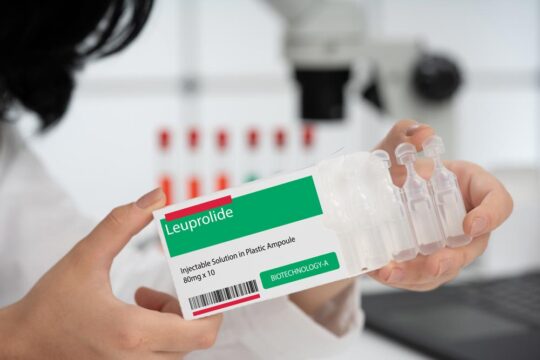Advertisment
Intra-Cellular Therapies unveils new data on CAPLYTA at ACNP annual meeting

Intra-Cellular Therapies, Inc., a biopharmaceutical company focused on the development and commercialization of therapeutics for central nervous system (CNS) disorders, announced presentations at the 63rd Annual Meeting of the American College of Neuropsychopharmacology (ACNP) which included new efficacy, safety, and tolerability analyses from its CAPLYTA adjunctive major depressive disorder (MDD) pivotal program.
“We have previously shared positive results from Studies 501 and 502 demonstrating a robust clinical profile of Caplyta as an adjunctive treatment in MDD with strong efficacy results in the Montgomery Asberg Depression Rating Scale (MADRS) total score, the Clinical Global Impression Scale for Severity of Illness (CGI-S) and the Quick Inventory of Depressive Symptomatology Self-Report (QIDS-SR-16) scale. We are excited to share new data that further characterize Caplyta ’s robust efficacy and favorable safety and tolerability profile,” said Dr. Suresh Durgam, Executive Vice President and Chief Medical Officer of Intra-Cellular Therapies. “In addition, the improvements in anhedonia symptoms observed in Study 403 further contribute to enriching CAPLYTA’s profile in the treatment of MDD and bipolar depression.”
Details of the presentations are as follows:
Poster T126 “Lumateperone as Adjunctive Therapy in Patients with Major Depressive Disorder: Results from a Randomized, Double-blind, Phase III Trial,” Tuesday, December 10
Poster W85 “Adjunctive Lumateperone in Patients With Major Depressive Disorder: Results From an Additional Randomized, Double-Blind, Phase III Trial,” Wednesday, December 11
These poster presentations highlight the efficacy of lumateperone 42mg adjunctive to anti-depressant therapy (ADT) shown in two similarly designed trials (Studies 501 and 502). In these studies, lumateperone 42 mg demonstrated significant and clinically meaningful efficacy over placebo, improving depressive symptoms and disease severity. Lumateperone plus ADT improved depression as measured by both clinician-rated and patient-reported outcomes (MADRS total score, CGI-S score, and QIDS-SR-16 total score). Subject to FDA approval, we believe these results demonstrate lumateperone represents a promising new treatment option for adults with MDD with inadequate response to prior ADT.
In both studies, MADRS response and remission rates were significantly greater with lumateperone compared to placebo. Specifically, in Study 501 the response rates for CAPLYTA were 45.6% vs. 24.0% for placebo (p<0.0001) and remission rates were 25.9% vs. 13.6% for placebo (p<0.001). In Study 502 the response rates for CAPLYTA were 40.1% vs. 25.3% for placebo (p<0.01) and remission rates were 25.0% vs. 13.5% for placebo (p<0.01).
In Study 501 anxiety symptoms were measured using the GAD-7 scale. Lumateperone plus ADT significantly improved self-reported anxiety symptoms, as measured by the GAD-7 total score, compared with placebo from baseline to Day 43 (Cohen’s d effect size (ES): 0.43; p<0.0001).
Poster W84 “Safety and Tolerability of Lumateperone 42 mg for the Treatment of Major Depressive Disorder: A Pooled Analysis of 2 Randomized Placebo-Controlled Trials,” Wednesday, December 11
A pooled analysis of Studies 501 and 502 demonstrates the safety and tolerability of lumateperone 42 mg plus ADT in patients with MDD who had inadequate response to ADT.
The most common adverse reactions in the lumateperone group (defined as ≥5% of patients and at more than twice the rate of placebo) were dizziness, dry mouth, somnolence, nausea, and fatigue.
In Studies 501 and 502 changes in cardiometabolic parameters, prolactin levels and body morphology with lumateperone were similar to placebo. The risk of extrapyramidal symptoms and motor symptoms with lumateperone was low.
Poster W88 “Lumateperone Treatment for Major Depressive Episodes With Mixed Features in Major Depressive Disorder and Bipolar I or Bipolar II Disorder: A Post Hoc Analysis of Anhedonia,” Wednesday, December 11
The poster reports on a post-hoc analysis from Study 403 evaluating the efficacy of lumateperone 42mg monotherapy in improving the anhedonia factor score in patients with MDD or bipolar depression with mixed features. The results from this analysis support lumateperone to treat the broad range of anhedonia symptoms of a major depressive episode in these patient populations.
Anhedonia, which is diminished interest or pleasure, occurs in approximately 70% of patients with MDD and approximately 50% of patients with bipolar depression. Heightened levels of anhedonia in mood disorders are associated with more severe and recurrent depressive illness, a greater risk of suicidal ideation, and poorer treatment response compared with lower levels of anhedonia.
Lumateperone significantly improved the MADRS anhedonia factor score from baseline to Day 43 compared with placebo in the combined MDD/bipolar depression population with mixed features (least squares mean difference (LSMD)= -3.4; ES= 0.63; p<0.0001) as well as both individual populations of patients with MDD with mixed features (LSMD= -3.4; ES= 0.63; p<0.0001) and bipolar depression with mixed features (LSMD= -3.3; ES= 0.61; p<0.0001).





